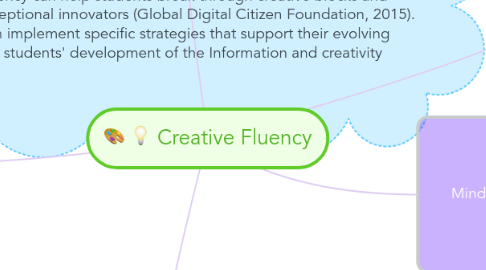Creative Fluency
作者:Chrissy DiMarco


1. References
1.1. Crockett, L., Jukes, I., & Churches, A. (2011). Literacy is not enough: 21st-century fluencies for the digital age. Thousand Oaks, CA: Corwin.
1.2. Global Digital Citizen Foundation. (2015). Creativity fluency [Video file]. Retrieved from http://globaldigitalcitizen.org/creativity-fluency-video
1.3. McLure, L. (2015, May). 10 ways to teach creativity in the classroom. Retrieved from http://blog.ed.ted.com/2015/05/08/10-ways-to-teach-creativity-in-the-classroom/
1.4. Provenzano, N. (2015, June). Creativity in the Classroom. Retrieved from http://www.edutopia.org/blog/creativity-in-the-classroom-nicholas-provenzano
2. Creative Team Building
2.1. A classroom should be collaborative and encourage students to work together in order to support everyone's learning (Provenzano, 2015). The beginning of the school year is a great time to implement these activities as "ice breakers". Personally, I have seen the benefits of these activities. Creative team building increases class communication and encourages productivity, not to mention a class full of smiling faces!
2.1.1. Spaghetti and Marshmallow Tower
2.1.2. The Human Knot
3. Open Ended Projects
3.1. Open-ended projects increase engagement and understanding of the material because students are given the chance to explore and present in a way that's meaningful to them (Provenzano, 2015). Implementing open-ended projects that tie in curricular objectives can help students develop creativity and problem solving. Project Based Learning (PBL) units, as well as 21st century fluency projects, are great ways to achieve this goal. The more frequently we plan for these projects, the easier it will become for both teachers and students.
4. Creativity is a whole-brain process that involves both hemisphere working together using the 5 I's of Creative Fluency: Identify, Inspire, Interpolate, Imagine, and Inspect (Crockett, Jukes, & Churches, 2011). The 5 I's of Creative Fluency can help students break through creative blocks and become exceptional innovators (Global Digital Citizen Foundation, 2015). Teachers can implement specific strategies that support their evolving practice and students' development of the Information and creativity fluencies.
5. Mindfulness Meditation
5.1. "Science tells us that mindfulness meditation helps the brain"(McLure, 2015). The physical and mental benefits of meditation are undeniable. Why not teach students the art of meditation early on in life? Meditation can boost a student's ability to come up with imaginative solutions to problems.
5.1.1. Headspace: A gym membership for the mind
5.1.2. 20 minute meditation at the end of every day

